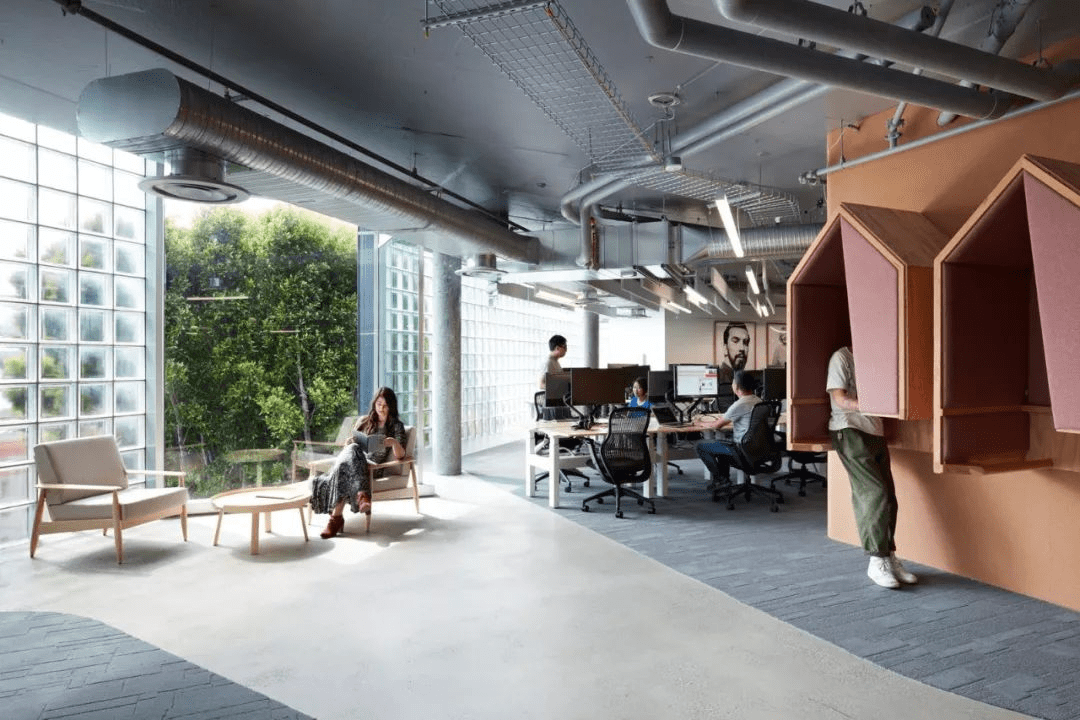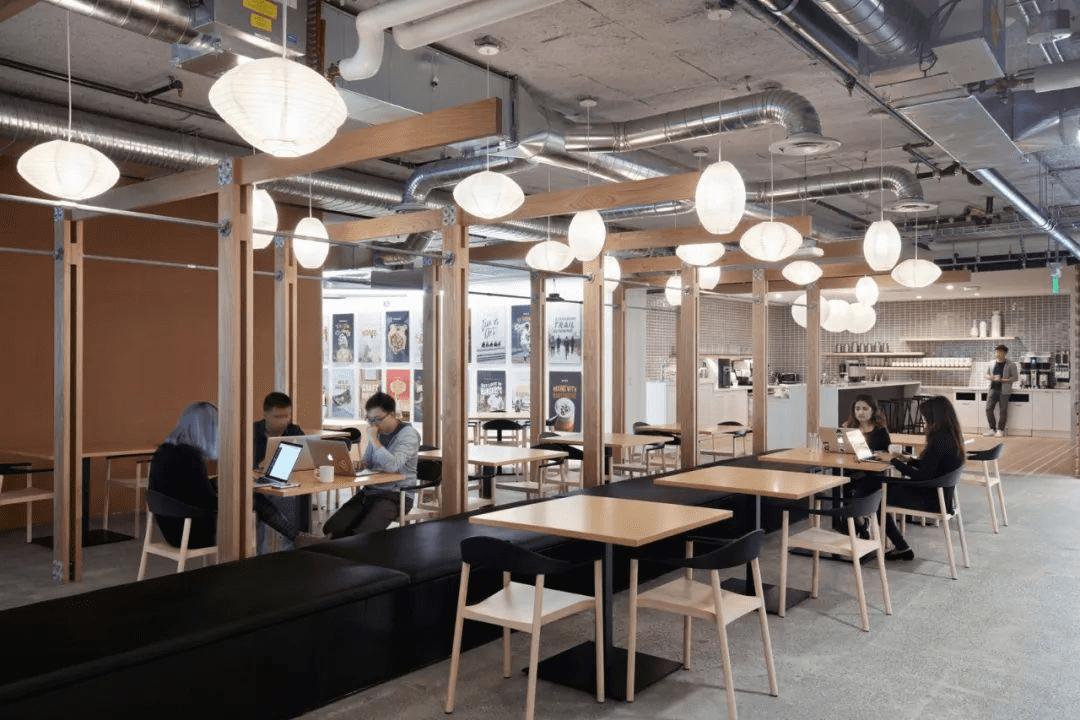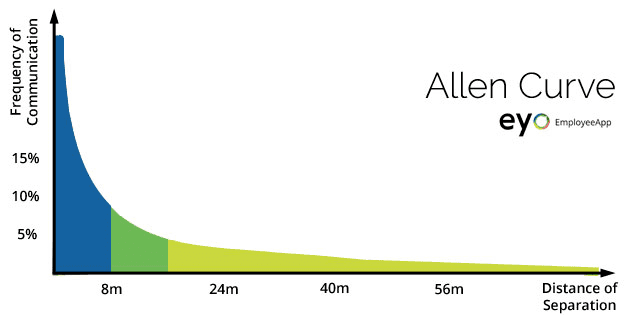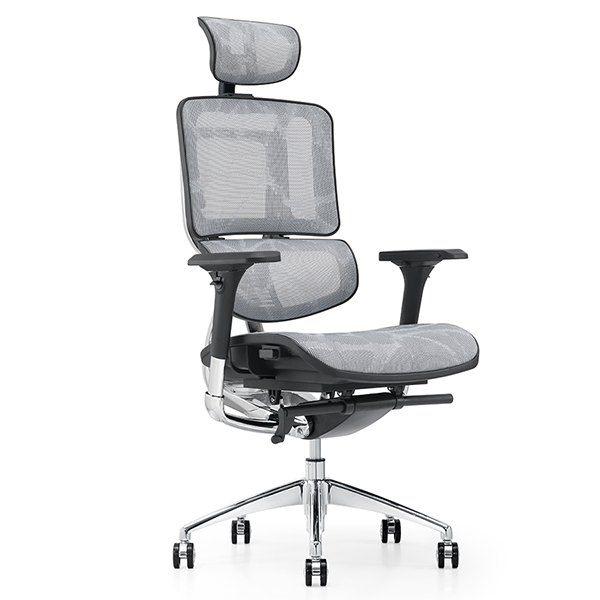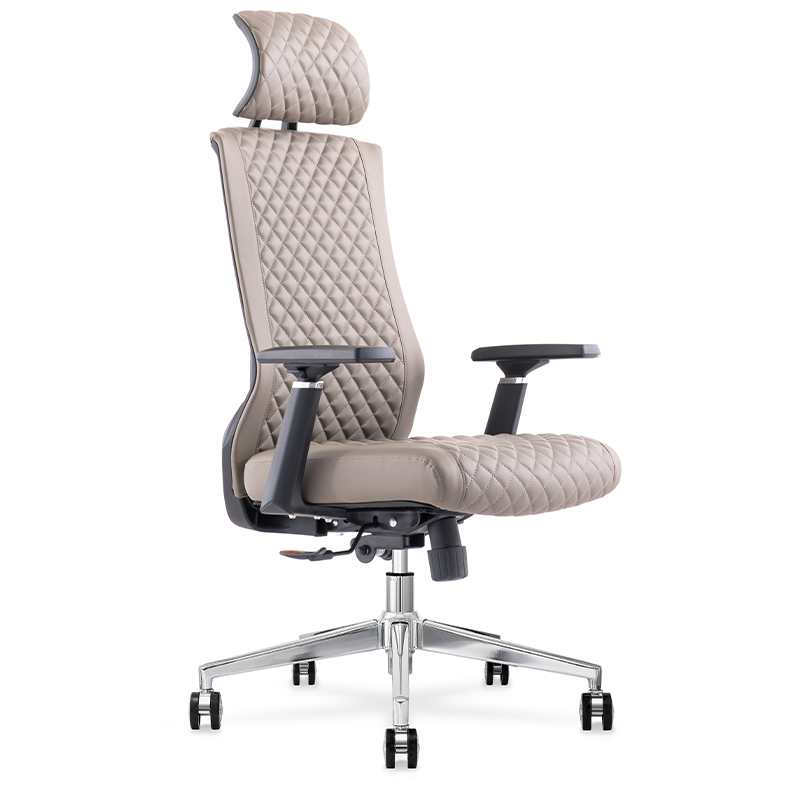In workplace planning and design, "people-oriented" has become a fundamental principle. It has to meet the actual needs of people and spiritual needs. The former can be achieved by hardware, such as ergonomic furniture, UV -proof curtains, and mite-proof carpets. The latter should consider people's office psychology, such as the distance between workplaces, the density of people in a specific area, the exchanges among colleagues, and innovative thinking inspired by interaction.
The Allen curve is not out of date.In his 1977 book Communication in Management Technology, the author Thomas Allen creatively proposed the "Allen Curve" theory, noting that colleagues communicate four times as often in a 6-foot (1.8-meter) range of workplaces as colleagues in a 60-foot (18-meter) range and that people on different floors communicate little.
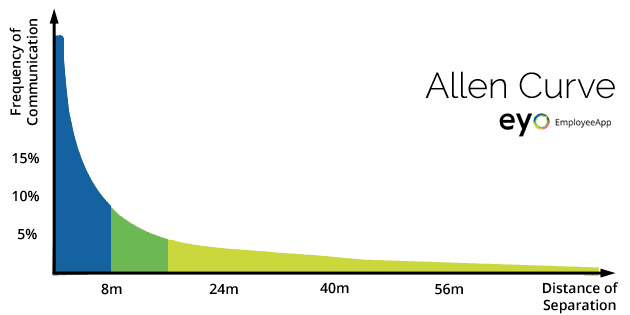
With the advent of electronic tools and social media, the Allen curve is supposed to be obsolete. However, when Allen discussed the study again in 2006, he found that his theory was not dead but more solid. Those closer to each other communicate more frequently through digital media. If we can see others visually, we are more aware of communicating with them.
Over the past decade, almost every Silicon Valley leader has confidently expressed that workplace interaction is an essential driver of innovation. In 2013, Yahoo asked its telecommuters to return to the office and work with colleagues. They realize the importance of employee interaction. But designers should also consider that employees work together and the possibility of interaction. What is the quality of the interaction? Excellent work environment designers will promote the interaction of Party A's staff through workplace planning and design.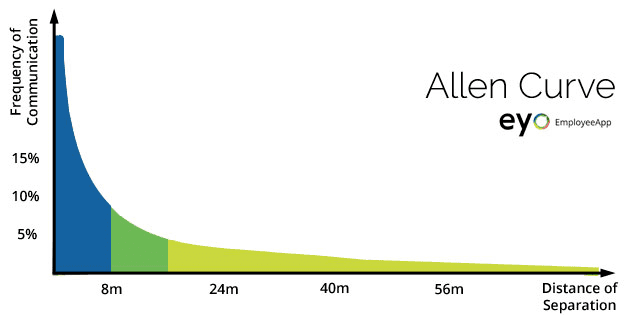
Moving the kitchen to the workplace and designing the staircase as a leisure space can create opportunities for employees to meet and interact accidentally, thus inspiring innovation. As a result, Agile workplaces, or "activity-based" workplaces, became popular. Some forward-thinking companies, such as Zappos in the US, have even begun calculating the number of person-to-person meetings in the office, which Zappos calls "collisional hours," or the number of possible interactions per acre per hour, as a measure of productivity. But it is also recognized that workplace interactions are primarily social. For example, people may first think of last night's TV show, so there is little chance of helpful information.
Not All Interactions Lead to Positive Co-operation Many people have misconceptions about how interaction leads to cooperation, increasing employee interaction. For example, people rarely chat in the company's deliberate lunch line. They talk when there is a long line and everyone is bored. Genuine cooperation is valuable. The Economist's book The Role of Trust in Business Cooperation describes the workplace at three levels: interactive coordination ("getting the job done" – mandated), collaboration ("we need"), and collaboration ("I wonder if we can...."). Cooperation is driven by shared personal interests and therefore requires a high degree of trust to create value that did not exist before.
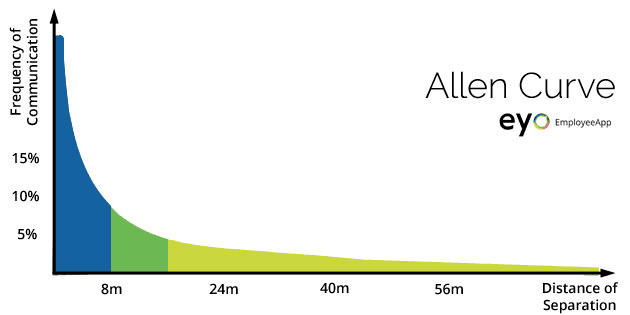
All of these characteristics determine that lunch queues rarely involve collaboration. Cooperation can only occur when there is a deep-seated relationship between people, in which all parties can benefit. People may initially encounter someone, but it will take time to build trust to produce something valuable from the relationship. We build trust and establish mutually beneficial relationships through regular interactions, working together, and close communication.
As we have seen, the workplace faces the challenges mentioned above. Practical and spiritual rewards for employees require the optimal design of workflow and wiring to support deep interaction among team members. Office space designers have long devised strategies for bringing like-minded employees together, including setting up accessible offices and desks for non-regular users.
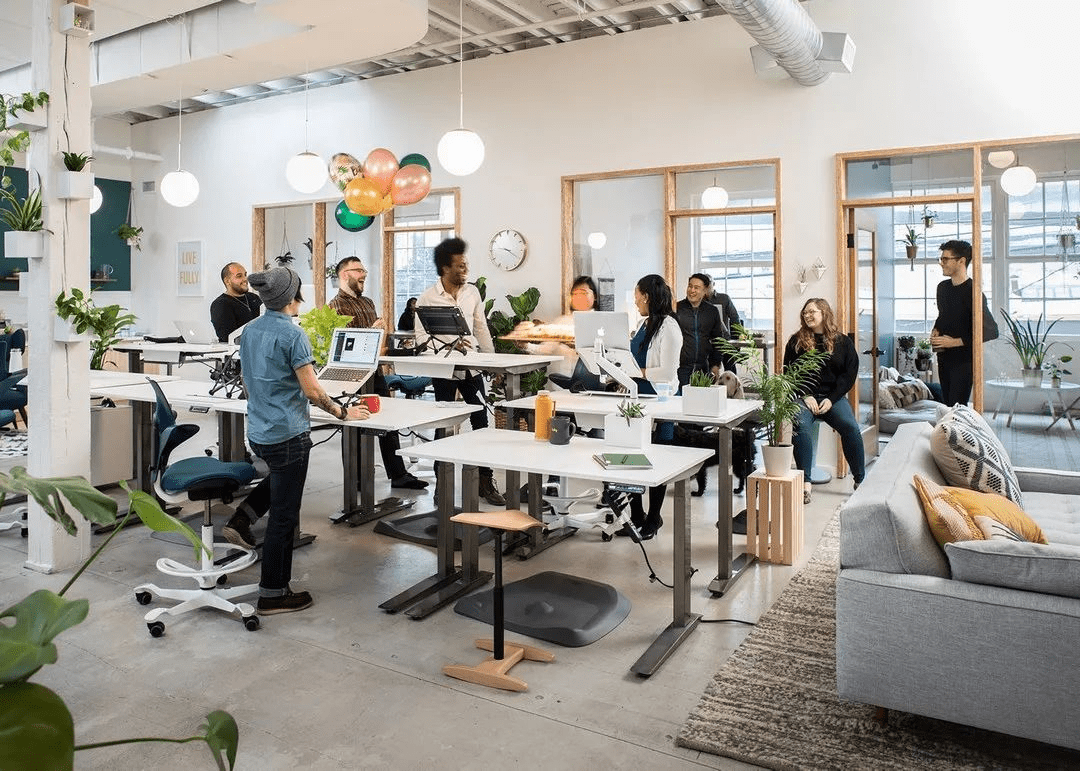
Think of "promoting interaction" as a design issue. In reality, everyone needs to work with colleagues and have in-depth conversations. Spiritually, we need to expand the contact of communication, seek new work ideas, and establish appropriate teamwork relationships. In the 1990s, professional services firms were keen to allow employees to use desks or meeting rooms by booking. But this approach can also lead to wasted bookings as office facilities are concentrated with busy people, and work schedules change. Then someone introduced a "sensor desk" system similar to a parking lot light — all existing desks will have a green light for booking and selection. But the system does not help employees find their co-workers, nor does it support teams regularly working in the exact location. Our office life shouldn't just "find a desk." Booking and "sensor desk" systems also contribute to tension while increasing space usage.
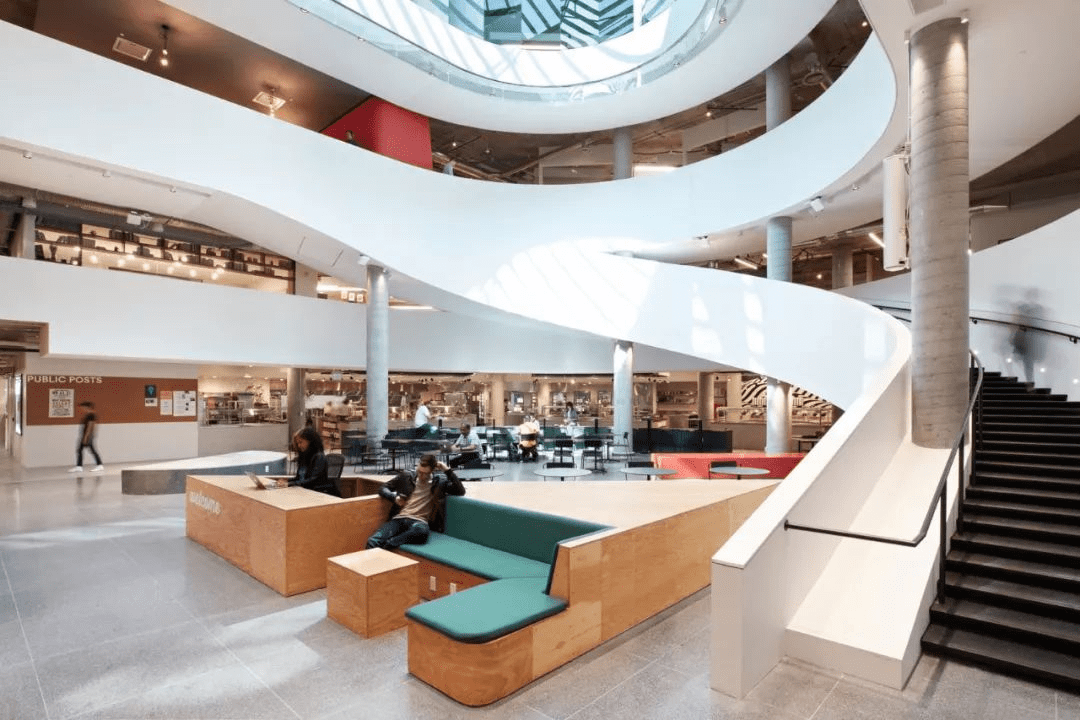
As technology advances, some wearable devices are being promoted in the office to collect data on employee interaction and communication. It is generally agreed that the more interaction between employees, the better. Using the collected data, we can accurately study the type and scale of interaction, stimulate more effective contact and create more profound communication opportunities. But a 2015 study by Google found that psychological security is a critical factor in team success, proving again that effective collaboration is built on trust and takes time and that the number of interactions does not solve the problem.
Once we have the data, we need to understand its logic and develop digital solutions. Now, our workplace facilities are getting better and better, kitchens, gyms, and cafes are getting more popular, but the challenge of teamwork remains. Designers should regard it as a design problem through space planning and design to create interactive opportunities for Party A employees to meet their practical and spiritual needs.
